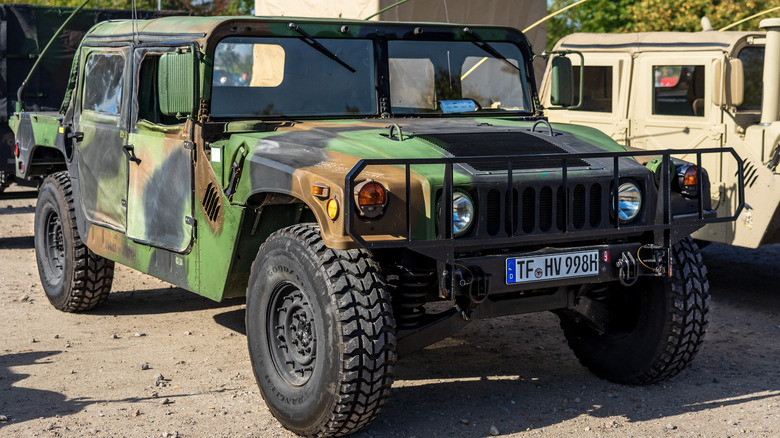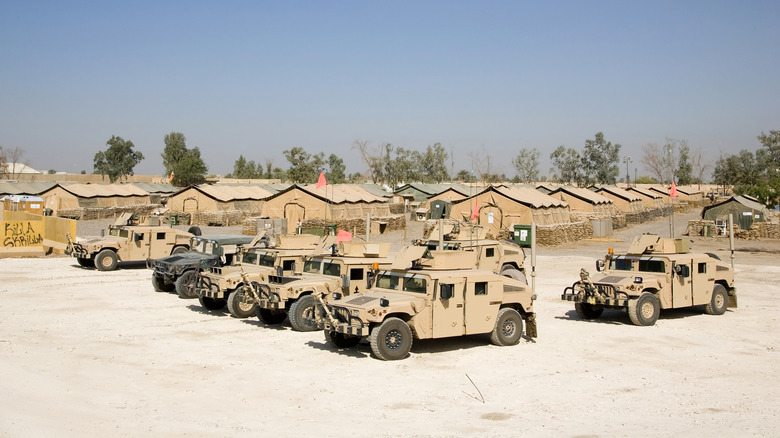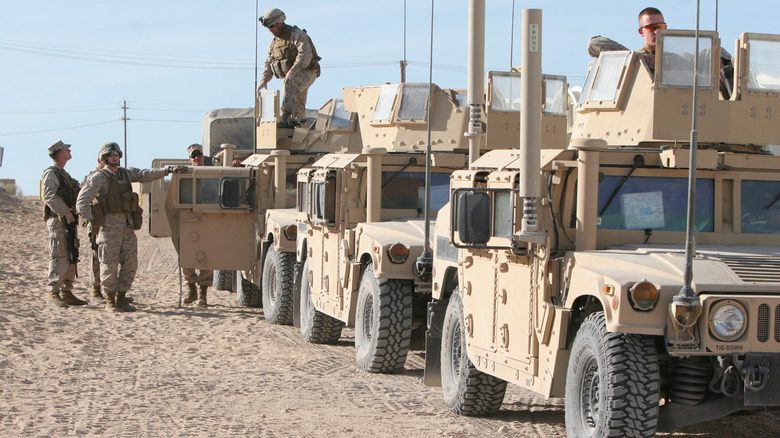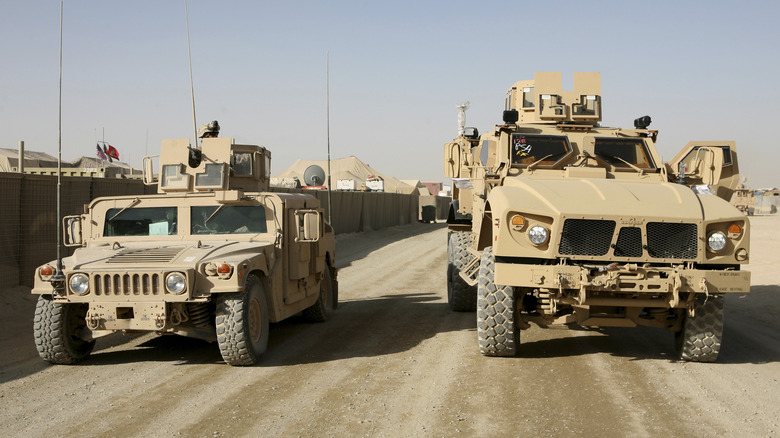From '85 To '23: The Evolution Of The Army Humvee
In June 1940, the United States Army needed a 1/4-ton "light reconnaissance vehicle." Of the 135 automakers they asked to submit bids, only three took them up on the offer (Bantam, Willys, and Ford), and in November 1940, the Willys-Overland company produced a prototype called the "Quad." Over the next four decades, the "Jeep" was the military's workhorse, capable of doing almost everything asked of it, and became a true vehicular legend.
By the end of the 1970s, the battlefield had drastically changed. The Vietnam War was a much different beast than World War II, and the Jeep could not keep up with the exponential modernization of weapons systems and tactics. Instead of redesigning the Jeep, the Army issued another request for proposal (RFP) in 1979 for an entirely new tactical vehicle to replace its aging warhorse.
AM General, Chrysler Defense, and Teledyne Continental were given contracts to create prototypes for a high-mobility multipurpose wheeled vehicle referred to as HMMWV, or more colloquially, the Humvee. By 1981 the Army picked AM General to build more, with additional development and testing of those prototypes occurring throughout 1982.
AM General was created as a separate company in 1971 but had direct ties to a long line of automakers going back to 1852 with Studebaker, then on to Willys, Jeep, and eventually American Motors Corporation (AMC). In 1983, the Army was satisfied with AM General's work and awarded them a five-year contract worth $1.2 billion to become the Humvee's sole supplier.
Ready for Prime Time
The first 55,000 Humvees were split between the four branches of the United States military, with 16,000 going to the Marine Corps, Air Force, and Navy, while 39,000 went to the Army. It rolled into combat for the first time when the US invaded Panama during Operation Just Cause.
The multi-purpose first gen HMMWVs came in five basic models and 15 configurations. The steel frame chassis had an aluminum body, was 15 feet long, six feet high, and seven feet wide, with a Gross Vehicle Weight (GVW) of 7,700 lbs.
It sported full-time four-wheel drive and independent suspension that could clear a 16-inch obstacle. Furthermore, it could easily wade through five feet of water and claw up and down 60% grades. It had a 6.2-liter, fuel-injected, liquid-cooled V8 diesel kicking out 150hp mated to a 3-speed automatic with a top speed of 65 mph. It was relatively quick, very agile, and able to carry 2,500 pounds of payload.
In August 1989, the Army handed AM General another contract worth an estimated $1 billion for an additional 33,000 Humvees. During that same year, the vehicle was upgraded with improved suspension, brakes, and extra armor, increasing the GVW to 10,000 lbs. Deliveries of these newly enhanced Humvees began in January 1990.
When the Humvee rolled into action during the Persian Gulf War in 1991, their popularity soared with both soldiers and the general public alike as the war was broadcast virtually non-stop in the United States.
More armor wasn't the answer
AM General released a new and improved Humvee in 1991, with upgraded durability and protection against corrosion, while upping the GVR to 10,300 lbs. They had a 6.50-liter V8 diesel engine with 160hp mated to a four-speed automatic transmission with a top speed of 70mph. They also came with a more robust 9,000lb winch, better steering wheel and column, and a larger cargo capacity, increasing overall payload capacity to 4,400 pounds.
By 1991 the company had produced 72,000 Humvees for the military. That same year it built another 20,000 for more than 40 other militaries worldwide. In 1992, the automaker unveiled the first civilian version of the HMMWV called the Hummer, in which Arnold Schwarzenegger played a pivotal role. In 1999, General Motors bought the Hummer brand while AM General continued building the vehicles, maintaining parts, offering training, and supporting warranties.
In 2006, AM General began working on the reliability of its warhorse by improving shock absorbers, the parking brake, and A-arm bushings. It also redesigned the geared hub assembly, fan drive, and shroud. Adding even more armor bumped the GVW to 13,500 lbs.
The Humvee was starting to show its age, and it couldn't protect troops from IEDs despite constantly adding armor kits and plating. Furthermore, the additional weight from all the extra armor made the vehicles heavy and unwieldy and caused issues with the suspension. One soldier said opening an armor-plated door "was like doing a one-arm sideways bench press."
Father Time always catches up
In 2006 the Marine Corps Systems Command brought together U.S. Marines, Army, Navy, and special operations units to devise a solution. That solution was the Mine-Resistant, Ambush-Protected (MRAP) armored vehicle with a V-shaped armor-plated hull that deflected explosions up and away from the vehicle. But it didn't fully replace the Humvee.
Over the next several years, the Humvee was morphed into several 2.5-ton expanded capacity vehicle (ECV) variants designed to carry loads up to 5,100 lbs. Powered by a turbocharged 6.5-liter V8 diesel engine, versions were created to act as ambulances and troop transports. In 2016, they turned it into a pseudo-tank called the Hawkeye by installing a 105mm howitzer, a roof-mounted Tube-Launched, Optically Tracked, Wireless-Guided (TOW) anti-tank missile, and a 30mm machine gun.
By 2012, AM General had produced over 280,000 Humvees. Yet, in 2013 the Department of Defense replaced the Humvee and the MRAP with the Joint Light Tactical Vehicle (JLTV), which was stronger than a Humvee and quicker than an MRAP.
In 2019, AM General created a wholly autonomous, remote-controlled Humvee completely devoid of any personnel. This uncrewed ground vehicle can carry all the same equipment and weapon systems, including a roof-mounted drone and night vision system, without endangering any soldiers.
AM General expects the Humvee to be a part of the US military until 2050.



